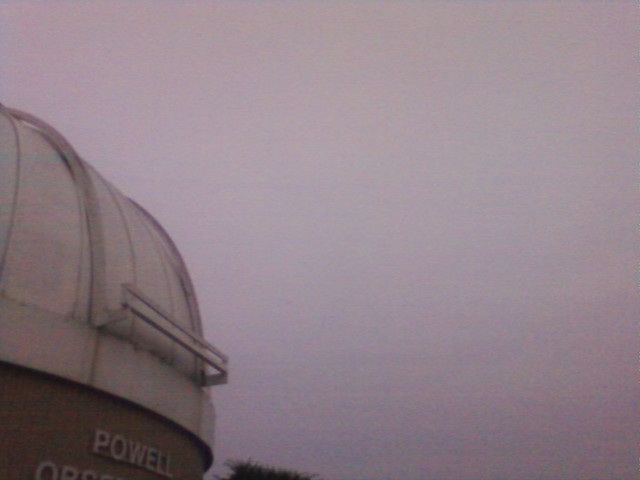 I woke up Sunday to nearly complete overcast. In fact, I went to bed with the same sky, or so it seemed when I looked out my bedroom window. I should have returned to bed for more sleep, especially since I had my first night as a volunteer staff team member at a public night at Powell Observatory in Lousiberg, Kansas and didn’t get home until close to midnight. Even though the skies started clouding up before sunset Saturday, over sixty people stopped by in the vain hope of seeing Mars, Saturn or even some of the spring galaxies visible this time of year. We (meaning other members of the ASKC) entertained and educated them with a program on galaxies, featuring M31, commonly known as the Andromeda galaxy. We were able to lock up the observatory a bit early, but the hour long drive home still put me three hours past my normal bed time.
I woke up Sunday to nearly complete overcast. In fact, I went to bed with the same sky, or so it seemed when I looked out my bedroom window. I should have returned to bed for more sleep, especially since I had my first night as a volunteer staff team member at a public night at Powell Observatory in Lousiberg, Kansas and didn’t get home until close to midnight. Even though the skies started clouding up before sunset Saturday, over sixty people stopped by in the vain hope of seeing Mars, Saturn or even some of the spring galaxies visible this time of year. We (meaning other members of the ASKC) entertained and educated them with a program on galaxies, featuring M31, commonly known as the Andromeda galaxy. We were able to lock up the observatory a bit early, but the hour long drive home still put me three hours past my normal bed time.
I wiled away Sunday reading sixteen chapters of Insurgent. My daughter spent the afternoon with friends and planned to attend the Tbones baseball game that evening. As the afternoon wore on, I could tell from my library window that the clouds drifted away and more blue began to dominate the sky. After six o’clock, I started transferring the telescope and photographic equipment to the vehicle for transport to the spot I had picked out to observe the solar eclipse.

I got to the site a bit after half past six and began setting up the scope. I called my dad and woke him up from his nap. He said he would be on his way in just a few minutes. I called him back and asked him to bring a level, since I had forgotten to grab one from the garage before I left home. Just as I had everything hooked up and ready to go, the sun slipped behind an extra large cloud and stayed there for several minutes. Since the solar filter only lets through one one-millionth of the light emitting from the sun, I couldn’t orient the scope until the cloud passed by.
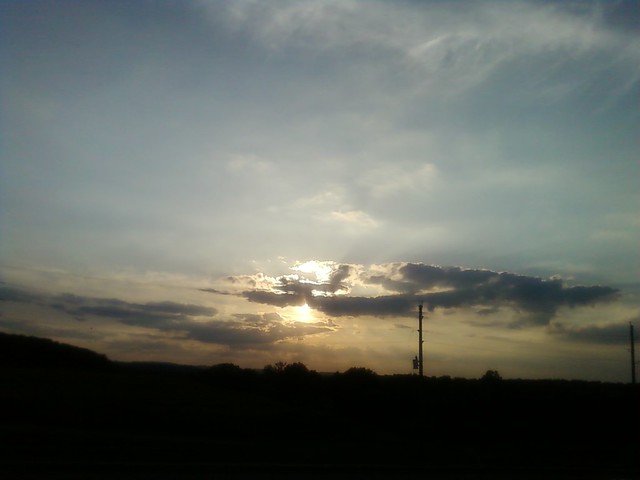
Dad arrived before the sun peeked out again. Using the level he brought, we fine tuned the tripod for better tracking in a polar mount configuration for the telescope. I had barely enough time to take a few test photographs of the sun to attempt to get the focus dialed in as much as possible. Focusing the telescope with the Pentax attached to it can be very challenging. The telescope becomes a large telephoto lens for the camera, but the digital camera is completely unaware of the telescope because the camera normally talks to a ‘smart’ lens which feeds it information about light conditions and focus. The telescope is completely passive and completely manual (except for the tracking motors which slew during observations to keep the object centered in the eyepiece).
To focus the Meade ETX90, whether using the eyepiece or the camera, I need to turn a small knob on the back of the scope that adjusts the mirror inside the scope. The viewfinder of the camera gave me a live image of the sun about the size of a dime (or smaller). I tried using my naked eye and my reading glasses, but neither one would resolve the sunspots to a fine acuity. I had to hope I got the focus ‘close enough’ for the camera. I don’t know of a technique to correct focus after the fact with photo editing software, so if I didn’t get it as close as I could, I would be stuck with slightly blurry photos.
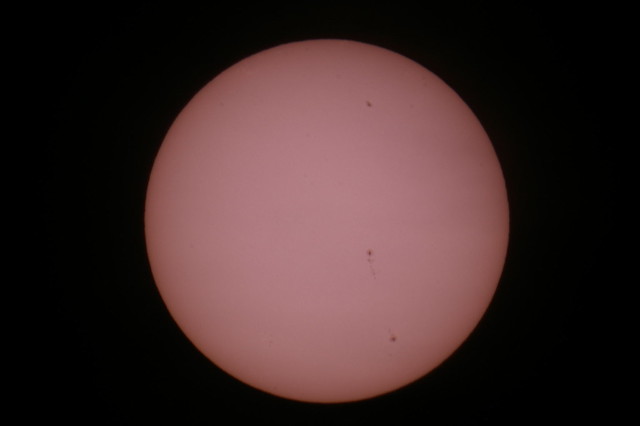
The eclipse began earlier than I thought it would, by about five minutes. I took several photographs over the next hour, as the sun (and moon) continued to sink through the clouds towards the western horizon. I had some problems with the wind and of course the clouds. With about ten minutes left before the sun (and moon) dipped below the horizon, I detached the camera from the telescope and instead took some photos of the stunning sunset occurring simultaneously with the solar eclipse.

Several people stopped by and asked about the eclipse. I could even show them some of the photos I’d taken using the preview feature and the view screen on the back of the Pentax. Here are a couple of crowd favorites among the shots I took:
I gained great experience during this solar eclipse. I feel more prepared and confident for the Transit of Venus, which happens in just two weeks from tomorrow! I’ll be in the same spot, clouds permitting. Otherwise, I may be forced to settle for a webcast of the event, because one way or another, I will witness it.


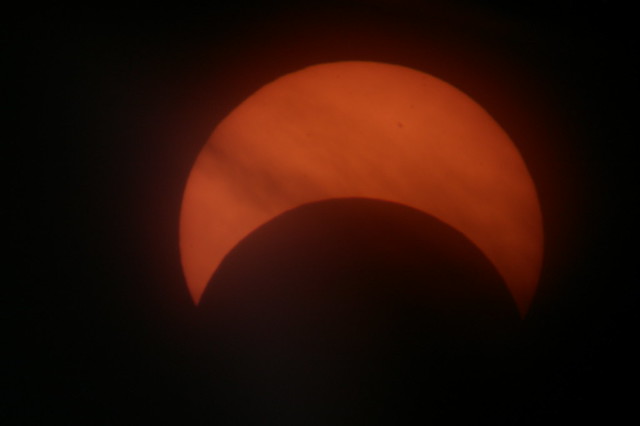
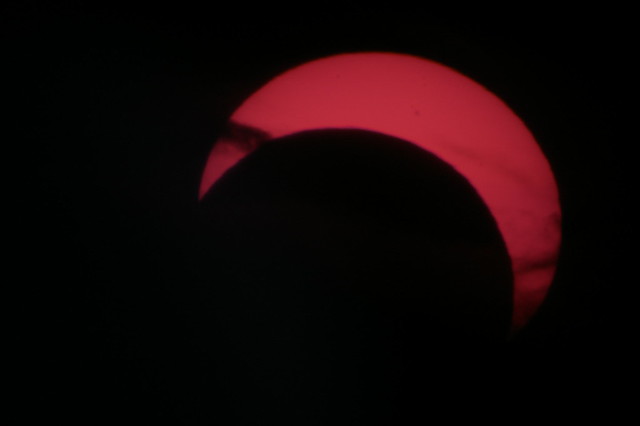
A great series of shots! Very charming indeed!! =)
Thank you! Struggled with the wind and clouds (and aging eyes) but I’m happy with them (especially since it’s my first time photographing a solar eclipse).
Thanks for stopping by!
Jon
Great job on the photos! Truly, I’m in awe. And so happy someone got some good shots of it, since I didn’t see it “live”.
Thanks!
Wow Jon – pretty impressive. We tried to look at the sun last night but it was impossible…. we did get to see all these really cool little scooped shaped shadows though.
I hope you didn’t look directly at the sun! 🙂 If I had been closer to a tree, I would have taken a picture of the crescent shaped shadows.
Thanks for stopping by!